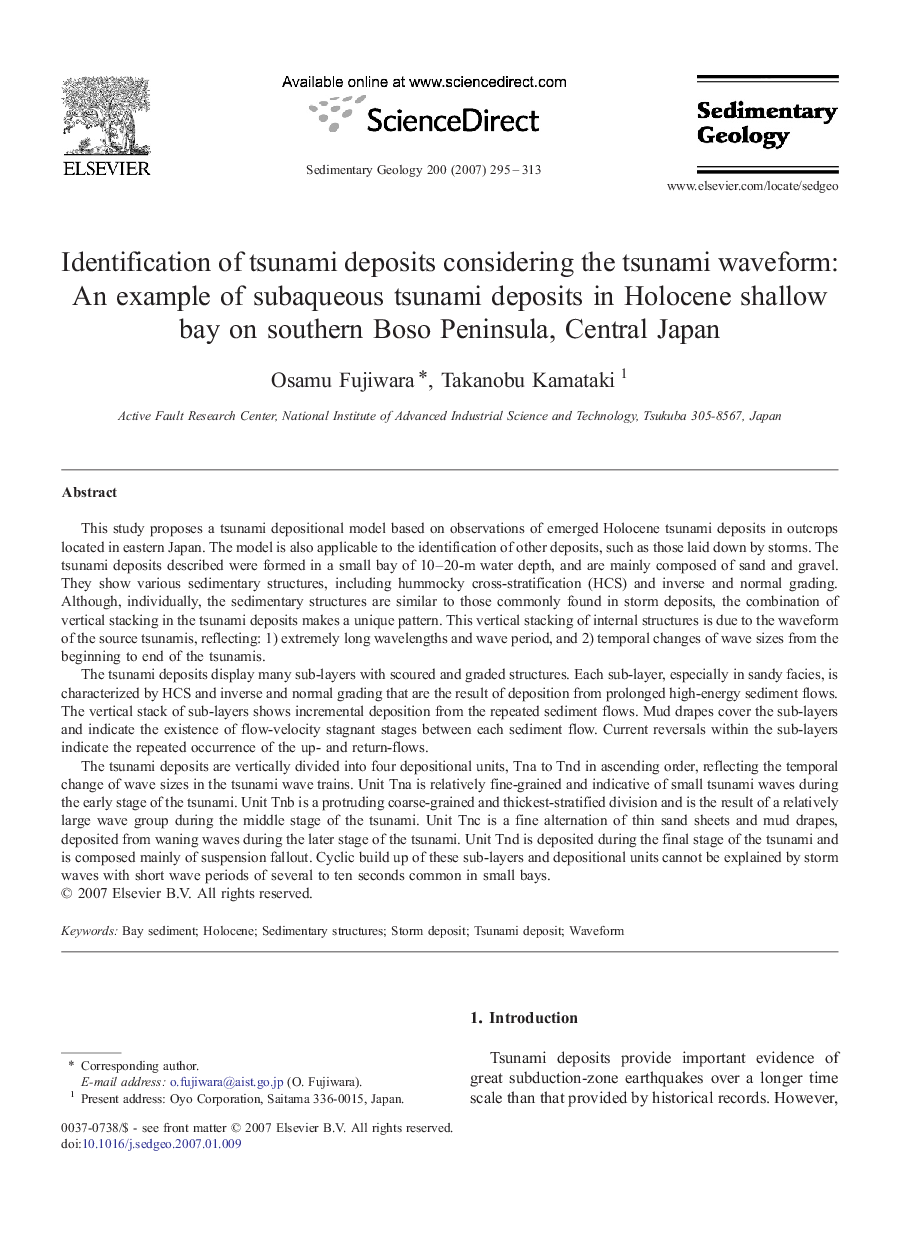| کد مقاله | کد نشریه | سال انتشار | مقاله انگلیسی | نسخه تمام متن |
|---|---|---|---|---|
| 4690721 | 1636165 | 2007 | 19 صفحه PDF | دانلود رایگان |

This study proposes a tsunami depositional model based on observations of emerged Holocene tsunami deposits in outcrops located in eastern Japan. The model is also applicable to the identification of other deposits, such as those laid down by storms. The tsunami deposits described were formed in a small bay of 10–20-m water depth, and are mainly composed of sand and gravel. They show various sedimentary structures, including hummocky cross-stratification (HCS) and inverse and normal grading. Although, individually, the sedimentary structures are similar to those commonly found in storm deposits, the combination of vertical stacking in the tsunami deposits makes a unique pattern. This vertical stacking of internal structures is due to the waveform of the source tsunamis, reflecting: 1) extremely long wavelengths and wave period, and 2) temporal changes of wave sizes from the beginning to end of the tsunamis.The tsunami deposits display many sub-layers with scoured and graded structures. Each sub-layer, especially in sandy facies, is characterized by HCS and inverse and normal grading that are the result of deposition from prolonged high-energy sediment flows. The vertical stack of sub-layers shows incremental deposition from the repeated sediment flows. Mud drapes cover the sub-layers and indicate the existence of flow-velocity stagnant stages between each sediment flow. Current reversals within the sub-layers indicate the repeated occurrence of the up- and return-flows.The tsunami deposits are vertically divided into four depositional units, Tna to Tnd in ascending order, reflecting the temporal change of wave sizes in the tsunami wave trains. Unit Tna is relatively fine-grained and indicative of small tsunami waves during the early stage of the tsunami. Unit Tnb is a protruding coarse-grained and thickest-stratified division and is the result of a relatively large wave group during the middle stage of the tsunami. Unit Tnc is a fine alternation of thin sand sheets and mud drapes, deposited from waning waves during the later stage of the tsunami. Unit Tnd is deposited during the final stage of the tsunami and is composed mainly of suspension fallout. Cyclic build up of these sub-layers and depositional units cannot be explained by storm waves with short wave periods of several to ten seconds common in small bays.
Journal: Sedimentary Geology - Volume 200, Issues 3–4, 15 August 2007, Pages 295–313